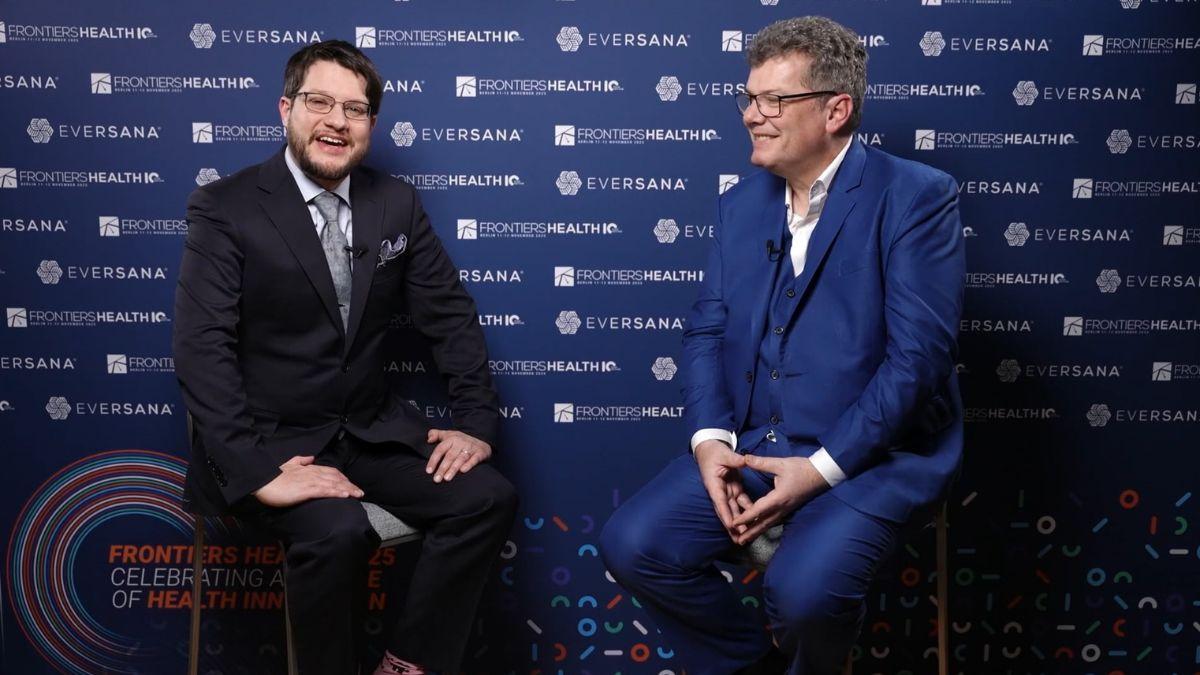Clinical trends for 2025: A year of change

After 2024, which saw a steady recovery by the life sciences industry, it looks like 2025 is set to be a year of change and development, particularly in clinical trials.
The good news is that investment has returned to the sector – for instance, according to JP Morgan’s Q3 2024 Biopharma Licensing and Venture report, $3 billion was raised across 16 biopharma IPOs on Nasdaq and the New York Stock Exchange. This compares with $2.7 billion raised from 13 IPOs for FY 2023 – a slight improvement and hopefully indicative that the markets have the confidence to fund the phase III trials needed to bring drugs to market.
Catherine Pickering, CEO of precision oncology biotech iOnctura, confirmed the growing market optimism following the company’s €80 million Series B fundraise in June last year: “For those companies with strong data and credible management teams, it is possible to find that funding to accelerate drugs through the clinic. It is great news for science and patients seeking new therapies for diseases with high unmet medical need.”
Investment rising, but no heady heights
Big pharma is also funding more R&D than ever before – according to IQVIA’s Global Trends in R&D 2024 report, 20231 saw a record $161 billion spent by large pharma companies. This is an increase of almost 50% since 2018 and suggests deals with big players will continue to shape the clinical trial landscape.
Nevertheless, data from IQVIA also demonstrates that clinical trial activity is still likely to be below the heady heights seen in 2021, at the height of the pandemic and the vast investment in life sciences that accompanied it.
In 2021, there were 6,250 trial starts globally, compared with just 4,873 in 2023, just above the levels seen in 2018. Jane Osbourn, CEO of Alchemab, said: “During the pandemic, there were a huge number of trials commenced to find therapies and vaccines for COVID-19. Without this extra activity, the number of trials has been reset to pre-pandemic levels. Nevertheless, there’s pent-up demand for new therapies following the slow period in 2022-2023.”
A changing launch landscape
The IQVIA data reveals pharma’s changing research priorities over the past few years: in 2020, a larger proportion of the trials involved infectious diseases as companies refocused their pipelines to counter the SARS-CoV2 virus. Activity in this area has been scaled back, with fewer novel active substance launches and more launches in neurology and oncology, including supportive care and diagnostics.
Paul Little, CEO of Vesper Bio, said: “The clinical trial agenda has been reorganised since the pandemic with companies changing their research goals, continuing to include more trials in cancer and areas where there has been recent clinical progress such as neurology and diabesity.”
ADCs: The ‘hot’ research area
In oncology, antibody-drug conjugate (ADC) research continues to be a “hot” area after recently approved drugs from this class, such as AstraZeneca and Daiichi Sankyo’s Enhertu (trastuzumab deruxtecan), achieved blockbuster status.
ADCs link a cancer-seeking antibody with a lethal payload that destroys tumour cells when it comes into contact with them while leaving healthy tissues untouched. With 11 marketed ADCs in the US, the hunt is on for new combinations of antibodies and payloads. This could lead to drugs that target different cancer types or that are more effective than previously developed ADCs.
In 2024, the peer-reviewed journal Bioengineering and Translation Medicine2 counted 551 active ADC trials globally, of which 36% were related to a potential new ADC. Andreas Pahl, CEO of Heidelberg Pharma, said: “There’s untapped potential in ADCs – the antibody technology is well established, and we see considerable progress in 2025 from developing new payloads that are more effective than predecessors.”
Radiopharmaceuticals and CGTs
The related field of radiopharmaceuticals, where the payload is a cancer-killing radioactive particle, is also becoming a busy area for research. The technology can also be used to radioactively “tag” cancer cells so that the disease can be observed in real time using specialist imaging equipment.
A horizon scanning document from the UK’s National Institute for Health and Care Research (NIHR) identified 80 clinical trials involving the technology, at Phase II or beyond. Manfred Rüdiger, the CEO of Ariceum Therapeutics, said: “The field has already attracted considerable attention from big pharmaceutical companies, and is already generating substantial revenues for the likes of Novartis. We expect further activity in the clinic as interest grows and pharma companies continue to invest in the technology.”
CAR-T therapies have raised the bar in certain blood cancers in recent years, with six such products now on the market in the US. However, there are significant barriers to uptake: their high cost, fearsome side effects, and lengthy manufacturing process involving the removal of a patient’s T-cells, which are then genetically modified and reintroduced to the patient to fight cancer. Efforts continue to develop “off the shelf”, or allogeneic cancer cell therapies that are derived from a bank of progenitor cells and administered to patients like a drug.
2024 saw the first FDA approval of a cancer cell therapy that tackles solid tumours – Adaptimmune’s Tecelra (afamitresgene autoleucel) was approved in August to treat certain forms of synovial sarcoma. Tecelra is a T-cell receptor (TCR) therapy that uses a modified form of a naturally occurring receptor to recognise cancer cells.
In the longer term, cell therapy could also be used to treat inflammatory diseases by eliminating defective B-cells that cause inflammation. Victor Dillard, VP, Strategy & Operations, at Resolution Therapeutics, added that other modalities are emerging as potential treatments very large unmet medical needs outside oncology: “Cell therapy is showing promise in very large patient populations with inflammatory and fibrotic diseases. The early data showing transformational impact of autologous cell therapies in lupus and advanced liver disease, for example, is opening new opportunities to technology similar to that which is already proven in cancer. Despite investment headwinds in cell therapy, we’ve seen an influx of cell therapy developers pivot and expand beyond oncology while the industry as a whole continues to invest in capacity building, manufacturing innovation, and seamless logistics.”
AAV vectors and rare disease
In rare diseases, research into novel new techniques such as CRISPR, base editing, and prime editing will continue, following the first FDA clinical trial clearance for the latter in 2024 from Prime Medicine.
Miquel Vila-Perelló, CEO of SpliceBio, added that, while these new modalities hold promise, the mainstay of the gene therapy sector remains adeno-associated virus (AAV) vectors. The first rare disease gene therapies on the market were based around AAV vectors and it’s a well-established method of introducing a functional gene into a patient.
“Work is ongoing to get the most out of the tried and tested AAV approach, including expanding the virus’s payload capacity so that they can carry larger genes, expanding the number of rare diseases that can be treated,” he said.
Piling into the GLP-1 space
There is also continued activity in obesity and diabetes following the runaway success of Novo Nordisk’s Wegovy (semaglutide) and other GLP-1 agonists. Pharma companies are piling into the space, which is becoming increasingly competitive. In a separate blog, IQVIA identified 157 active clinical assets in obesity, including seven at the pre-registration phase waiting for a regulatory decision. Of these, 20% were GLP-1 drugs alone, with a host of other combinations such as GLP-1/gastric inhibitory peptide (GIP), GLP-1/glucagon, and GLP-1/amylin. IQVIA also found there were 50 other mechanisms of action being evaluated in the clinic, with 43% being oral therapies, 55% parenteral therapies, and 2% administered in another way.3
Big news is also expected from some of the major players; for example, Eli Lilly is aiming to conclude a phase III trial of an oral GLP-1 drug orforglipron in type 2 diabetes. As the drug is a non-peptide, it could have an advantage over previous GLP-1s by being easier to produce and therefore cheaper than existing treatments. GLP-1s are also being trialled in diseases such as Parkinson’s, Alzheimer’s, and addiction.
Maina Bhaman, Partner at Sofinnova Partners, said: “With the huge success of GLP-1 drugs to treat diabetes and obesity, this will continue to be a hot area for research as companies refine the technology, or try and find new mechanisms and combination therapies to compete with the established drugs.”
Stefano Gullà, CSO at Kling Bio, added that, although infectious diseases investment may have retreated following COVID, the emergence of a new pathogen and the need for vigilance could quickly lead to further investment in the field: “The tragic bird flu outbreak in Louisiana shows that we must remain vigilant against emerging viruses that could make the jump from animals to humans. COVID showed us that the industry, together with government and academia, can mount a rapid response to such threats, but we must remain vigilant and ensure that investment continues in this vital area of research.”
China syndrome
Another trend identified by IQVIA is the continued geographical shift in clinical research. The US and Europe remain popular places to conduct research, but an increasing number of trials are now starting to take place in China and other Asian countries.
Much of this is down to the development of the country’s own biopharma industry, although, many of the big multinational firms have also established a foothold in China too, with AstraZeneca being a prominent example.
According to IQVIA, trials from China-headquartered companies have risen to 28% of trial starts, up from 3% a decade ago. IQVIA also found that a quarter of Chinese-headquartered companies are active internationally, often focused on oncology and COVID-19.
While China’s maturing healthcare system and regulatory pathways are allowing its life sciences industry to grow, there are issues with red tape in Europe that are driving trials away.
Eliane Schutte, CEO of Xeltis, is excited about the prospects in medical device clinical research in 2025 and beyond, but added that regulatory issues in Europe need to be addressed to ensure new and innovative medical device trials remain in Europe.
“On top of the European regulations, there are country-specific requirements regarding market access, which make it more difficult to enter EU member state countries. This could be discouraging companies from trialling medical devices in the region, and could be one of the reasons why we are seeing companies begin to pursue alternative, or multiple, geographical locations for their clinical trials,” she said.
The rise and rise of AI
Artificial intelligence (AI) is playing an increasing role in drug R&D as companies seek to reduce costs and reduce the risk of a clinical trial failing. Figures from the journal Fundamental Research show that there is a failure rate of 90%4 in the clinical trial process, making an already expensive process highly unpredictable.
Companies are using AI right across the development process, from finding the ideal drug candidate to machine learning (ML) techniques such as deep learning (DL), where multiple neural networks are combined to identify potential candidates. DL is capable of learning for itself the kind of features to look for in a potential candidate, minimising the amount of input needed from the human operator.
AI can also be used to sift through vast amounts of data from various sources, such as electronic health records, social media, and news reports, to provide early warning systems for emerging pathogens. It can also help with trial admin, by identifying potential patients for trials from electronic records, as recruitment is a perennial issue.
Further, AI can help to identify and diagnose diseases and identify targets using advanced computational techniques. Advanced software such as AlphaFold can accurately predict protein structures and is on its third iteration at the time of writing.
Progress in AI feeds into related areas, too, such as clinical diagnostics and medical devices. Trials can be decentralised and data gathered remotely, with more patient input overall into the development process.
Simon Turner, partner at Sofinnova’s Digital Medicine Strategy, said: “At all levels of the clinical trial process, AI technology has the potential to reduce risk and cost, with huge benefits for patients and those tasked with discovering and developing new drugs.
“It can function as a catalyst for the development of novel therapies that could perhaps exploit new targets while reducing risk of trial failure and development costs. This trend will continue into 2025 and beyond as drug developers compete to bring drugs to a market that is increasingly price sensitive.”
Reference
- https://www.iqvia.com/insights/the-iqvia-institute/reports-and-publications/reports/global-trends-in-r-and-d-2024-activity-productivity-and-enablers
- https://aiche.onlinelibrary.wiley.com/doi/10.1002/btm2.10677
- https://www.iqvia.com/locations/emea/blogs/2025/01/outlook-for-obesity-in-2025-more-than-a-transition-year
- https://www.sciencedirect.com/science/article/pii/S266732582400205X












